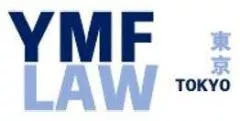- within Intellectual Property topic(s)
- in South America
- with readers working within the Construction & Engineering industries
- within Privacy topic(s)
- with Finance and Tax Executives
. . . The court expressly ruled that Netflix was not required to use specific language or "magic words" to define a field of endeavor and that "general language is sufficient to allow the Board to consider alternative arguments on the merits."
In Netflix, Inc. v. DIVX, LLC, No. 2022-1138 (Fed. Cir. Sep. 11, 2023), the Court of Appeals for the Federal Circuit ("Federal Circuit") clarified the "field of endeavor" and "reasonably pertinent" tests used to determine if a prior art reference is analogous to the invention claimed in a patent. The court's decision, which vacated and remanded the Patent Trial and Appeal Board's ("the Board") inter partes review decision, centered on whether an asserted prior art reference is "analogous prior art" to the patent's claimed invention. The Board determined that it was not and declined to consider the reference in evaluating the patentability of the claimed invention.
The dispute involved U.S. Patent No. 8,472,792 ("the '792 patent") owned by DivX, LLC. The '792 patent is directed to a method of encoding, transmitting, and decoding multimedia files that contain a series of encoded video frames, a first index with information on the location and characteristics of each encoded video frame, and a second index with information on a subset of the encoded video frames' location within the file. Specifically, the patent discloses a file structure using an Audio Video Interleave ("AVI") file, which utilizes storage structures called "chunks." A standard AVI file contains an "idx1" chunk that holds information about every single frame. The invention disclosed in the '792 patent implements an additional chunk, the "index" chunk, which contains information for certain subsets of frames. The "index" chunk in this file structure is used to locate specific frames in the multimedia file thereby enabling a feature called "trick play functionality," which allows users to fast forward, rewind, or skip scenes based on the location of those specific frames.
In its petition for inter partes review, Netflix asserted that the claimed invention of the '792 patent would have been obvious to a person of ordinary skill in the art based on two prior art patents referred to by their inventor's last names, Zetts and Kaku. The disputed issue concerned whether the secondary reference, Kaku, is "analogous prior art" to the '792 patent.
According to Netflix, Zetts discloses a system and method of inserting an abridged index referred to as a "GOP offset table" at the beginning of a multimedia file that facilitates trick play functionality. And Kaku discloses the use of the AVI file format to store video/audio data with an "index chunk" written to the end of the AVI file, containing the beginning addresses of each frame. Netflix therefore asserted that a person skilled in the art would have been motivated to combine the teachings of Zetts and Kaku to apply the concept of inserting a GOP offset table at the beginning of an AVI file to enable trick play functionality in an AVI multimedia file system.
According to Federal Circuit precedent, determining whether prior art is analogous to the challenged patent requires satisfying at least one of two separate tests: "(1) whether the art is from the same field of endeavor, regardless of the problem addressed, and (2) if the reference is not within the field of the inventor's endeavor, whether the reference is still reasonably pertinent to the particular problem the inventor is involved with." In re Bigio, 381 F.3d 1320, 1325 (Fed. Cir. 2004); see also Airbus S.A.S. v. Firepass Corp., 941 F.3d 1374, 1379 (Fed. Cir. 2019).
In its final written decision, the Board agreed with DivX that Netflix failed to show that Kaku was analogous art under either test. Regarding the field-of-endeavor test, the Board determined that Netflix failed to meaningfully identify the field of endeavor for either the '792 patent or Kaku. The Board criticized Netflix for taking apparent inconsistent positions regarding the field of endeavor, emphasizing at different times such things as file formats, AVI files, or the encoding and decoding of multimedia files as the relevant field. Specifically, the Board faulted Netflix for failing to define Kaku's and the '792 patent's field of endeavor by using the exact words "field of endeavor" to specify the asserted common subject matter and therefore ruled that Netflix failed to meet its burden of establishing that Kaku is analogous art.
The Federal Circuit said that the Board abused its discretion by requiring Netflix to explicitly identify the field of endeavor using specific language such as "the field of endeavor is . . ." to signal the pertinent subject matter. The court clarified that the field of endeavor can be determined "by reference to explanations of the invention's subject matter in the patent application, including the embodiments, function, and structure of the claimed invention.'" Opinion at 10 (quoting Bigio, 381 F.3d at 1325). The court explained that the field-of-endeavor test does not narrowly look to the problem that the patent purports to address, stressing that the "field of endeavor 'is not limited to the specific point of novelty, the narrowest possible conception of the field, or the particular focus within a given field.'" Opinion at 10 (quoting Unwired Planet, LLC v. Google Inc., 841 F.3d 995, 1001 (Fed. Cir. 2016)). Instead, "[i]t is enough that the prior art reference falls within the relevant field of endeavor of the patent-in-suit." Opinion at 11.
The court noted that Netflix had identified two alternative possible theories for what it perceived as overlapping fields of endeavor between Kaku and the patent-in-suit — (1) the use of AVI files and (2) the encoding and decoding of multimedia files. The court expressly ruled that Netflix was not required to use specific language or “magic words” to define a field of endeavor and that “general language is sufficient to allow the Board to consider alternative arguments on the merits.” Opinion at 12. In other words, “even where a petitioner does not explicitly define a field of endeavor, its briefing may nonetheless present an argument on that issue when taken as a whole.” Id. The court remanded the case to the Board to decide “whether Kaku is directed to the same field of endeavor as the patent-in-suit based on the arguments fairly presented by the parties, including Netflix's arguments that Kaku and the '792 patent are both directed to AVI files and/or that they are both directed to the encoding and decoding of multimedia files.” Id. at 14.
Regarding the reasonably-pertinent test, the Board found that Netflix failed to correctly identify the problem addressed by either the '792 patent or Kaku. The Board rejected Netflix's assertion that the functions of encoding and decoding multimedia files disclosed in Kaku was reasonably pertinent to the problem addressed by the '792 patent because those functions, standing alone, were generally well known in the art. The Board instead agreed with DivX that the problem addressed by the '792 patent is facilitating trick play functionality in streaming media and since Kaku itself did not address this problem, the Board concluded that it is not analogous art under the reasonably-pertinent test.
The Federal Circuit affirmed the Board's application of the reasonably-pertinent test. The court explained that prior art falling outside an inventor's field of endeavor may yet be analogous prior art if it is reasonably pertinent to the problem addressed by the inventor. "Put another way, a prior art reference is reasonably pertinent only if 'a person of ordinary skill would reasonably have consulted those references and applied their teachings in seeking a solution to the problem that the inventor was attempting to solve.'" Opinion at 15 (quoting In re GPAC Inc., 57 F.3d 1573, 1578 (Fed. Cir. 1995)). Based on the patent's specification, claims, and prosecution history, the court found substantial evidence supporting the Board's finding that the '792 patent was directed to enabling trick play functionality, which was not a problem addressed by Kaku. Opinion at 16. Instead, Kaku addressed the problem of using image compression as a means of expanding the capacity of a digital camera's limited memory. Id. In view of those findings, the Federal Circuit concluded that the Board reasonably found that "a skilled artisan considering the '792 patent's problem of trick play would not have looked to Kaku, which addresses a different problem." Id. at 17.
In conclusion, this case provides helpful guidance regarding the application of the "field of endeavor" and "reasonably pertinent" tests for determining whether prior art is analogous to a claimed invention. The court's reminder that the field-of-endeavor test does not look to the problem that the patent purports to address both distinguishes the two tests for analogous prior art from each other and clarifies that the field-of-endeavor test permits consideration of prior art that discloses subject matter generally overlapping with the subject matter of the patent. Moreover, that overlap can be demonstrated by argument in the petitioner's brief without resorting to specific "magic words" or rigid definitions of the "field of endeavor." Nevertheless, although the Federal Circuit's decision provides a flexible and permissive interpretation of the field-of-endeavor test, the issues addressed in the decision might have been avoided by clearer articulations of the relevant field of endeavor and the problems addressed by the patent. The Federal Circuit's decision in this case provides practitioners with needed direction in articulating that a particular reference is, or is not, analogous prior art for purposes of assessing patentability.
Originally published by 10 October, 2023
The content of this article is intended to provide a general guide to the subject matter. Specialist advice should be sought about your specific circumstances.


